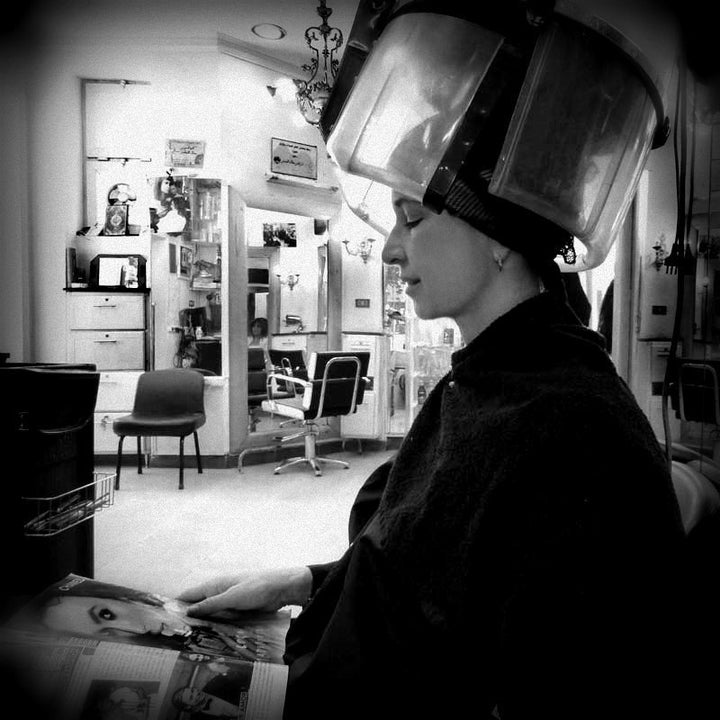
Bonjour mes amis!
Last time we met we discussed how you should approach your "first date" with a new stylist. This time I want to discuss what to expect from your new salon and some "dealbreakers" that you shouldn't tolerate... now, let's go, we have an appointment!
Every new stylist-client relationship must begin with a consultation. The consultation is like the first phone call before going on a date; it sets the tone and provides an opportunity for both parties to discuss needs, limits and expectations. The consultation is where you sort out the underlying problems and find out how the stylist can remedy your hair issues. It's the foundation of a successful style and without it you are almost guaranteed to leave unsatisfied.
My consultations are relatively simple and there's only one rule: I MUST see my client in her own attire. (If you go into a salon and are draped in a robe before your stylist sees you, your cut is not going to respect your head to toe proportions.) Once seated, I ask the client how her hair makes her feel, then I share my observations:
"How do you feel about your hair?" "Ugh! I can't do anything with it. It's too flat, it's frizzy, and it just hangs there!"
"Ok. When was your last cut?"
"About, three months ago. I liked it the first couple of weeks, but as soon as it started to grow out I was back to square one."
"Can I tell you what I see when I look at your hair?"
I don't criticize or dwell on what's already been done, that's all in the past, we're working in the present. I don't ask what she wants to do with her hair, that question puts the client in an awkward position -- you wouldn't want your accountant to ask you how you want to calculate your taxes, right? Once my client tells me what she dislikes about her hair, I use that information to create my plan. Then, I give her a mirror, turn the chair and show her what her hair looks like from all angles:
"People spend very little time observing you from the front; it's a little awkward to stare directly into someone's face -- try it on the subway, I guarantee the number of empty seats around you will double. Most of the time it's only acceptable to observe someone from the back or side... "
Try looking at yourself from a different perspective, get a hand mirror and look at your profile.
With your free hand manipulate the shape of your hair and you'll see how much a cut can change your appearance. This method is the same one I use to help people understand what needs to be done in order to create a great style.
Another important part of the consultation is hair color. Color is a simple way to enhance a haircut and when done well, it can be very low maintenance. The greatest color results come from synergy between stylist, colorist and client. When your colorist is present during the consultation they are able to understand where the focal points of the haircut are. From there, he or she is able to play up these points and create even greater interest within your style.
After your consultation is complete, you should know what is going to be done and why. If you don't have a clear vision of the end result ask your stylist for a simple summary of what needs to be done. Once you've gained a full understanding of what you're going to accomplish you are ready to start the service. From here your stylist will send you to get a shampoo. Your shampooer should take the time to evaluate your hair and scalp and recommend a cleansing system that suits you. FYI, if the salon uses the same shampoo and conditioner on every client you're not receiving the best care possible and your hair will not perform well.
At the end of your cut the stylist should take time to recommend styling products and walk you through techniques that will allow you to create a style at home. At the end of your service, the stylist will show you all sides of the cut with a hand mirror. Now, take off the robe, stand up, and look at yourself head to toe. Do you feel gorgeous? You should!
When you're checking out at the front desk -- before payment is discussed -- the associate should ask if you were pleased with your experience and address any concerns. They should also ask if you need any products and help book any future appointments before you leave.
Overall, your new salon should ensure that you receive treatment that respects your individuality, "one size fits all" does not work in a hair salon -- remember the '80s?
Next time, we'll discuss the easiest way to shed up to five pounds in five minutes! Ooh la la...
A bientôt!
Yves